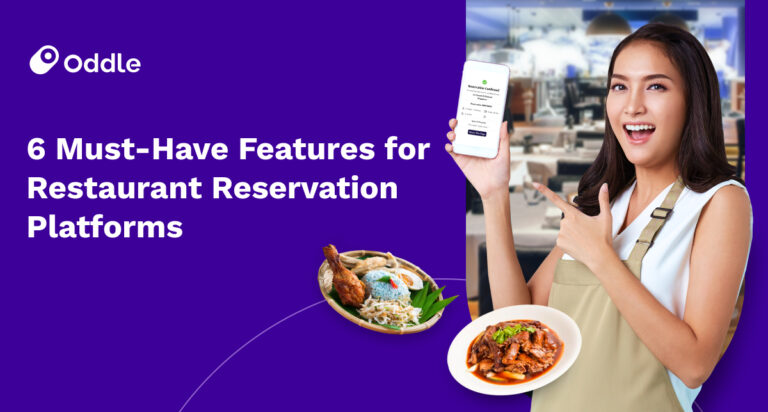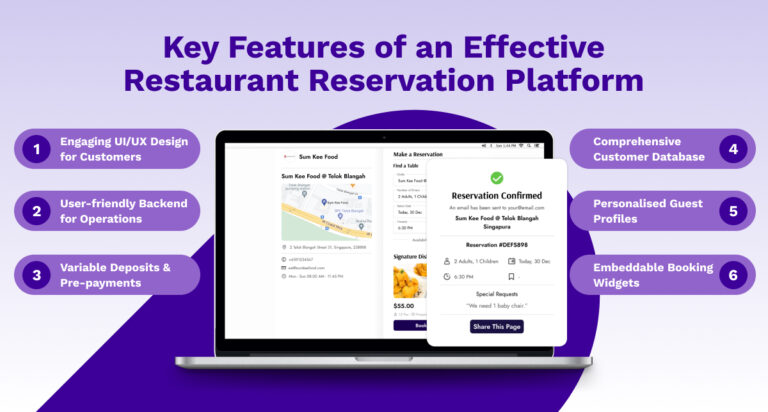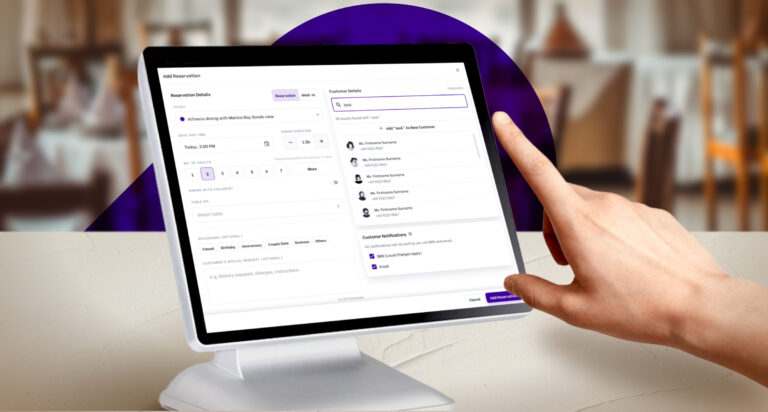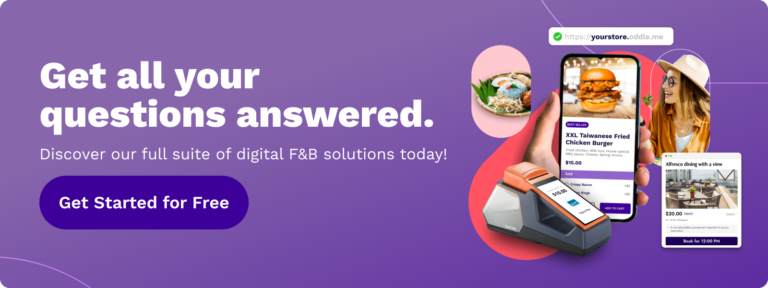Restaurant Table Reservation System:
6 Must-Have Features
Six Key features to drive sales & create customer re-visits

In today’s market, there is an extensive range of restaurant table reservation systems available, each offering fancy features and sleek interfaces. With so many options, it can be overwhelming to choose the right one for your restaurant.
To help you navigate this variety, we’ve put together a simple guide highlighting 6 key features to look for in a table reservation system for restaurants. These features are designed to enhance operational efficiency, increase your brand’s online visibility, and boost overall revenue.

1. Engaging UI/UX Design for a Seamless Customer Experience
Restaurant Table Reservation System is a critical component of your online presence. The importance of User Interface (UI) and User Experience (UX) in web design cannot be understated. UI focuses on the visual elements of a page (such as buttons, text fields, and checkboxes), while UX emphasizes the user journey and functionality of a website.
2. User-friendly Backend for Effective Operations Management
Restaurant Table Reservation System is essential for many F&B owners due to its efficiency. A well-designed Restaurant Table Reservation System should allow quick access to important details such as guest information, floorplans, and number of covers, especially during peak hours when time is of the essence.
3. Variable Deposit and Pre-payment Functions to Reduce No-Shows
Restaurant Table Reservation System features can significantly impact your business, particularly in addressing reservation no-shows, which affect up to 30% of monthly business in Singapore.
When choosing a Restaurant Table Reservation System, it is crucial to shortlist those that offer dynamic deposit and pre-payment features. Depending on your restaurant type, you can adjust deposit rates accordingly. A token $5 deposit might be enough to ensure attendance on weekdays, while on weekends or peak periods, this amount can be increased to manage demand.
4. Actionable Data Insights to Drive Restaurant Revenue
Restaurant Table Reservation System features are vital in today’s tech-savvy economy where data is king. It is imperative that your chosen system facilitates data collection to provide insights into your consumers’ dining habits.
For example, understanding the most common occasions for guests visiting your establishment (e.g., birthdays, date nights) can help you determine what special bundles or packages to offer, encouraging higher spending.
5. Guest Profiles to Boost Customer Relationship Management (CRM)
Restaurant Table Reservation System features make it much easier to create personalized experiences for all your guests.
These customer profiles are only visible to your operations team and help to foster deeper, more meaningful engagements between them and your diners. Such conscientious service also builds brand loyalty, ensuring that your customers keep returning.
6. Embeddable Booking Widgets
Restaurant Table Reservation System features often include a booking widget, a button or application that links your website to your reservations platform. With this function, merchants can easily accept bookings across multiple channels without incurring extra fees.
Why Oddle is Your Best Choice for a Restaurant Table Reservation System?

After exploring the essential features of a top-notch Restaurant Table Reservation System, it’s clear that Oddle Reserve stands out as the optimal choice. Here’s why:
- Comprehensive Data Collection and Analysis: Oddle Reserve facilitates extensive data collection, allowing you to glean valuable insights into your customers’ dining habits. Use this data to tailor special offers, optimize your floorplan, and run targeted marketing campaigns.
- Seamless UI/UX Design: Our system boasts an intuitive interface and exceptional user experience, ensuring that both your customers and operations team can navigate it effortlessly. The result is a smooth booking process and efficient backend management.
- Dynamic Deposit and Pre-Payment Features: Oddle Reserve offers flexible deposit and pre-payment options. Adjust deposit rates to encourage attendance and manage demand during peak periods. This feature significantly reduces no-show rates and enhances revenue.
- Personalized Customer Profiles: Each guest on Oddle Reserve has an editable profile, allowing you to note down preferences, allergies, and special dates. This personalization fosters meaningful customer interactions and boosts loyalty. Automated reminders and thank-you messages further enhance the customer experience.
- Integrated Booking Widget: Our booking widget seamlessly integrates with your website, enabling you to accept reservations directly from your page without additional fees. This feature serves as a powerful call to action, converting site visitors into reservations.
- Customer Engagement and Feedback: Oddle Reserve’s engagement module allows you to send automated reservation reminders and thank-you messages via SMS or email. Collect guest feedback through customizable satisfaction surveys to continually improve your service.

